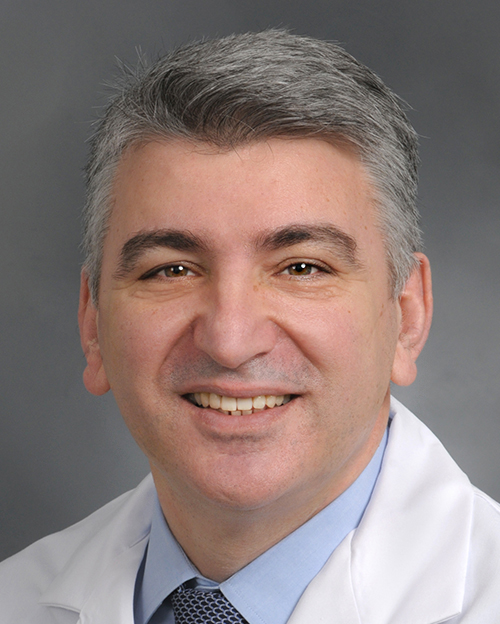 Apostolos K. Tassiopoulos, MD
Apostolos K. Tassiopoulos, MDVascular Surgeon
Chief, Division of Vascular Surgery
Chairman, Department of Surgery
More than 80 million American individuals suffer from vein disease. The Center for Vein Care at Stony Brook provides patients with a unique combination of expertise, experience, innovation, individualized options and convenience. Here, Dr. Tassiopoulos discusses the most common types of vein disease, identifying symptoms and how to get help.
What are the different types of vein disease?
Since there are three types of veins that make up the venous system (superficial, deep and perforator veins), there are distinct clinical conditions attributed to each. The most common form of venous disease affects the superficial venous system (veins that are found above the muscles close to the skin) and presents as varicose veins. The development of blood clots, also known as deep vein thrombosis (DVT), chronic venous obstruction or pelvic congestion syndrome are the most common deep vein diseases that affect the patient’s well-being.
Are there any warning signs for vein disease?
Many people with varicose veins experience leg pain or discomfort that tends to worsen with prolonged sitting or standing, and is worse at the end of the day. Some patients may have deep vein problems or a combination of superficial and deep venous disease that often results in advanced signs (swelling, skin discoloration or skin ulcers) and requires prompt evaluation and treatment by a vascular expert.
What types of treatment options exist for vein disease?
There are self-help measures such as exercise, elevating the legs or wearing compression stockings which may ease the signs and symptoms of vein disease. However, these only control some of the symptoms and may not eliminate the problem or prevent progression. If the way your legs look and feel becomes a concern, or if self-help measures are not successful, consider a consultation with a Center for Vein Care vascular specialist. The Center also provides free vein screenings.
What can people expect from a vein screening?
Vein screenings are done in our offices and usually take about 15 minutes. We perform a simple noninvasive test called a venous duplex (ultrasound) as a vein mapping. This is used to diagnose the problematic vein segments. Next, our physicians will assess the severity of your vein condition and will tailor a treatment plan specific to your anatomy and desired outcome.
How does Stony Brook’s Center for Vein Care differ from others?
We have multiple offices conveniently located throughout Suffolk County, including Centereach, Commack, Hampton Bays, Holbrook and Southampton. We use the most advanced diagnostic tools and the least invasive surgical and nonsurgical techniques to treat vein disease. Minimally invasive procedures are performed in our offices, using local anesthesia with or without mild sedation offering a truly pain-free experience. Patients walk out of the office with minimal discomfort and can typically return to normal activity within a few days.
To learn about the Center for Vein Care, visit vein.stonybrookmedicine.edu or call (631) 444-VEIN (8346).

